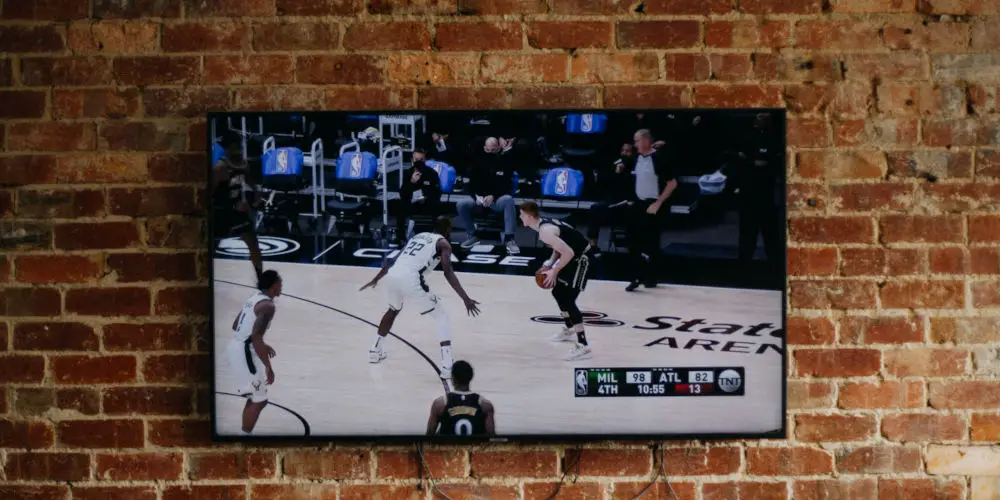What is HDR TV and is the upgrade worth it?

If you’re looking for a new TV, you’ll probably see the term High Dynamic Range, or HDR for short. Many see having a TV with this technology built-in as a step up from your standard television. But you might wonder what is HDR TV and do you need this feature?
For decades, video content was subject to limitations set by broadcasters, which are now non-existent. HDR removes these limitations found in older video signals and provides information about brightness and colour across a much wider range.
Currently, five different HDR formats are available. These include HDR10, HDR10+, and Dolby Vision. Confusing the situation slightly, each TV brand supports different versions making the decision trickier.
If you wonder what is HDR TV and if you need it? By the end of this article, you’ll understand what these terms mean and have a better idea of the transformative benefits of the technology.
HDR, What does that mean on a TV?
HDR is a TV standard that allows screens to give you improved contrast levels, more accurate and true to life colours, and increased vivid pictures than regular sets.
The majority of 4K TVs support one of the five HDR formats. So, it’s not an expensive add-on or exclusive to a particular manufacturer. As you can buy a 4K HDR TV from around the £400 mark (such as the Philips Ambilight 43PUS7855 43″ TV), it’s hardly out of reach for the average consumer.
In the last few years, we’ve seen the amount of content available in HDR formats dramatically increase. You can now enjoy a range of shows and films on streaming services as well as ultra-HD Blu-rays and even some games.
You’ll notice when watching HDR content that your viewing experience improves thanks to deeper blacks and brighter whites, offering you a better overall picture quality.
But that’s not to say 4K HDR picture quality is always the best. In some cases, whites become quite washed-out, leading to a softening of details during brighter scenes, which impacts the viewing experience.
What makes the technology special?
Even though most photographers will have heard of HDR, quite confusingly the video format is different from the still image format. Without getting overly technical, let’s summarise the differences:
Photo HDR: Combining multiple images with different exposures to create a single image that mimics a greater dynamic range.
TV HDR: Expanding the TV’s contrast ratio and colour palette to offer a more realistic, natural image than what’s possible with today’s HD/ultra HD TVs.
As the name suggests TV HDR creates a greater dynamic range between the darkest blacks and brightest whites, as well as more subtle differences in hues in between.
Although a 4K TV is great on its own, a 4K HDR TV picture appears brighter and with richer details. These subtle differences are more apparent in movies and shows with darker scenes.
But that’s only part of the HDR puzzle. Also, the hues you’ll see will be even more vibrant, providing a more life-like picture. Of course, the difference in viewing experience you’ll see depends on the quality of your HDR TV.
What formats are available and which is the best HDR option?
Just to make things interesting or complex, depending on how you look at it, there are five different HDR formats. Different manufacturers offer support for various formats, allowing you to pick the HDR TV that looks the best to your eyes.
These formats are:
- HDR10
- HDR10+
- HLG
- Dolby Vision
- Technicolor
While all five are fundamentally similar as they offer greater contrast and colour depth, the difference between the formats can be many. It comes down to how they use metadata, which media players and studios support them, and how easy they are to broadcast.

Wait, what is metadata?
Metadata is the information required to make a standard video file into an HDR video file. There are two types of metadata: dynamic and static.
Dynamic metadata adjusts the HDR on a scene-by-scene basis, based on the brightness of your TV and what’s being displayed.
While Static metadata doesn’t, meaning these heightened details can be lost when scenes get particularly bright or dark.
Imagine putting sunglasses on to go outside, when you return you’d take them off, this is dynamic metadata. Static metadata, on the other hand, is leaving your sunglasses on, no matter if you’re inside or out!
Hopefully, you can see that each is slightly different. It’s one of the main differentiating factors between the HDR types.
Here’s what kind of metadata, each type uses:
- HDR10 uses static metadata
- HDR10+ and Dolby Vision both use dynamic metadata
- Technicolor can use both
- HLG doesn’t use either.
HDR10 (the reigning standard)
As the current HDR standard, HDR10 is compatible with every HDR-capable TV, allowing you to easily enjoy watching a range of content. For example, streaming services such as Netflix and Amazon Prime Video (30-day FREE trial) offer plenty of content in HDR10.
Film studios such as Sony, Universal and Warner Bros release much of their content in HDR10 ultra-HD Blu-rays. Many game consoles are also compatible with HDR10, including the PS4, Xbox One S and Xbox One X.
Dolby Vision
As Dolby charges TV manufacturers to use Dolby Vision, unlike HDR10, it’s only available on select models, which are usually more expensive.
Using dynamic metadata rather than static, it offers a noticeable improvement over HDR10 with vivid, true to life colours from deep blues to brightest whites.
Another factor unique to Dolby Vision is that fixes a range of issues that prevented HDR content from being easily broadcast. It works with older HDMI versions and can be transmitted alongside standard dynamic range (SDR) content, which is used for TV broadcasts.
Dolby Vision HDR also has a higher brightness ceiling. Screen brightness is measured in nits. Some TVs can comfortably achieve up to 2,000 nits. However, HDR10 tops out at 1,000. Dolby Vision extends this ceiling to 4,000 nits, allowing you to take advantage of brighter screens.
Many TVs released since 2018 from brands including LG, Panasonic, and Sony are compatible with Dolby Vision. That said, Samsung, for a reason you’ll soon discover, is a notable holdout.
HDR10+
Using dynamic metadata rather than static, many industry heavy-weights, including Samsung, 20th Century Fox, Amazon Video and Panasonic, support HDR10+. As an updated version of HDR10, this improved technology solves some of the inherent problems of the original.
As Samsung is investing in the project, they clearly see a future in HDR10+ and that it’s a viable alternative to Dolby Vision. Manufacturers and content producers don’t have to pay a licence fee as they do with Dolby Vision, it makes sense for them to use this technology.
That said, only a few TV manufacturers and content creators have adopted HDR10+, meaning it’s more of a niche technology than Dolby Vision, which is the choice of many brands.

HLG (Hybrid Log-Gamma)
Yet another acronym! HLG or hybrid log gamma was developed by the BBC and Japanese broadcaster NHK in an attempt to solve the problem of broadcasting HDR content.
In Japan, HLG is already in use, yet the BBC isn’t using the technology in any capacity. Recently, the BBC has been trialling HLG on its streaming platform with Blue Planet II, the World Cup and Wimbledon matches, all being available in 4K HDR, even if it’s for a limited time.
With only a tiny amount of content available in HLG, you might suspect that TV brands are reluctant to support this format. However, since 2018 various manufacturers, including Samsung, Panasonic, LG and Sony support this technology across a range of TVs.
That said, the jury is still out on whether the BBC and other major UK broadcasters will use HLG rather than Dolby Vision for their HDR broadcasts.
Technicolor
Technicolor HDR upscales SDR content to HDR and was developed in conjunction with Philips. The company has gone further and now offers Advanced HDR technology, which uses Artificial Intelligence (AI) to maximise the image quality of any HDR format.
As content is upscaled by the Technicolor technology, you can watch HDR videos on non-HDR TVs. That said, in reality, there might be very little difference in quality.
The technology solves a typical HDR compatibility issue as it converts one HDR signal to another that’s supported by your TV. For example, if your TV only supports Dolby Vision, Technicolor could convert the signal, and your TV could display it.
Is it easy to find HDR content?
Even if you have an HDR TV, it doesn’t automatically mean you’ll watch everything in HDR. To enjoy watching any of these formats, the content must be mastered in HDR. Otherwise, the technology is just another unusable option.
The situation is similar to finding 4K content. Both HDR and 4K have been around for several years, yet it’s only in the last year that we’ve seen a rise in the amount of content available in these formats.
And while you may be able to access HDR content on YouTube, Amazon Prime, Netflix, and Disney+, you’ll still need a decent broadband (25 megabits per second or more) to stream 4K HDR content over the internet.
The good news is the major of movie studios are distributing new films in HDR quality and are also re-mastering older titles. Many 4K Blu-ray players can play these 4K HDR Blu-ray discs. These discs also carry Dolby Atmos data for improved audio.
Sadly, the UK’s TV infrastructure is struggling to keep up with broadcasting in 4K. So, we’ll have to wait a little longer before HDR TV becomes a mainstream reality.
Is it good for gaming?
As HDR creates high contrast between light and dark areas on screen, High Dynamic Range technology is perfect for gaming. Particularly for gamers who enjoy playing warzone, exploration or high intensity games on a console or PC.
Is it worth buying an HDR TV?
The majority of 4K TVs currently on the market support HDR as standard. So, you probably don’t have a choice! That said, as prices of 4K TVs become more affordable and with an increasing amount of content available in HDR, it’s worth investing in a future-proof TV.
Plus, a TV with these features doesn’t cost more to run. So your electric bills should stay the same.

Will I need special cables to enjoy HDR content?
The majority of cables can transmit HDR content, so your old wire should be fine. If you decide to upgrade to newer cables, invest in good quality High-Speed HDMI cables. They can carry HDR and are affordable.
Part of the HDR puzzle is the devices. If you’ve upgraded your TV and switched to an Ultra HD Blu-ray player in the last few years, it’s likely your devices are HDR-compatible. So as long are they are, your current cables are probably fine.
If your devices or even one of them isn’t HDR-compatible, no matter the cables, you won’t be able to enjoy watching the HDR format. So you’ll need to upgrade before you can experience this format.
Does HDR TV live up to expectations?
You should be clearer on what is HDR TV and what it means in terms of viewing content. While High Dynamic Range technology offers an improvement in overall image quality, it’s not the revolutionary change many of us initially expected.
That said, many new TVs, Blu-ray players, and devices now offer HDR compatibility. The future promises further picture improvement driven by this technology, creating an even better viewing experience at home.




